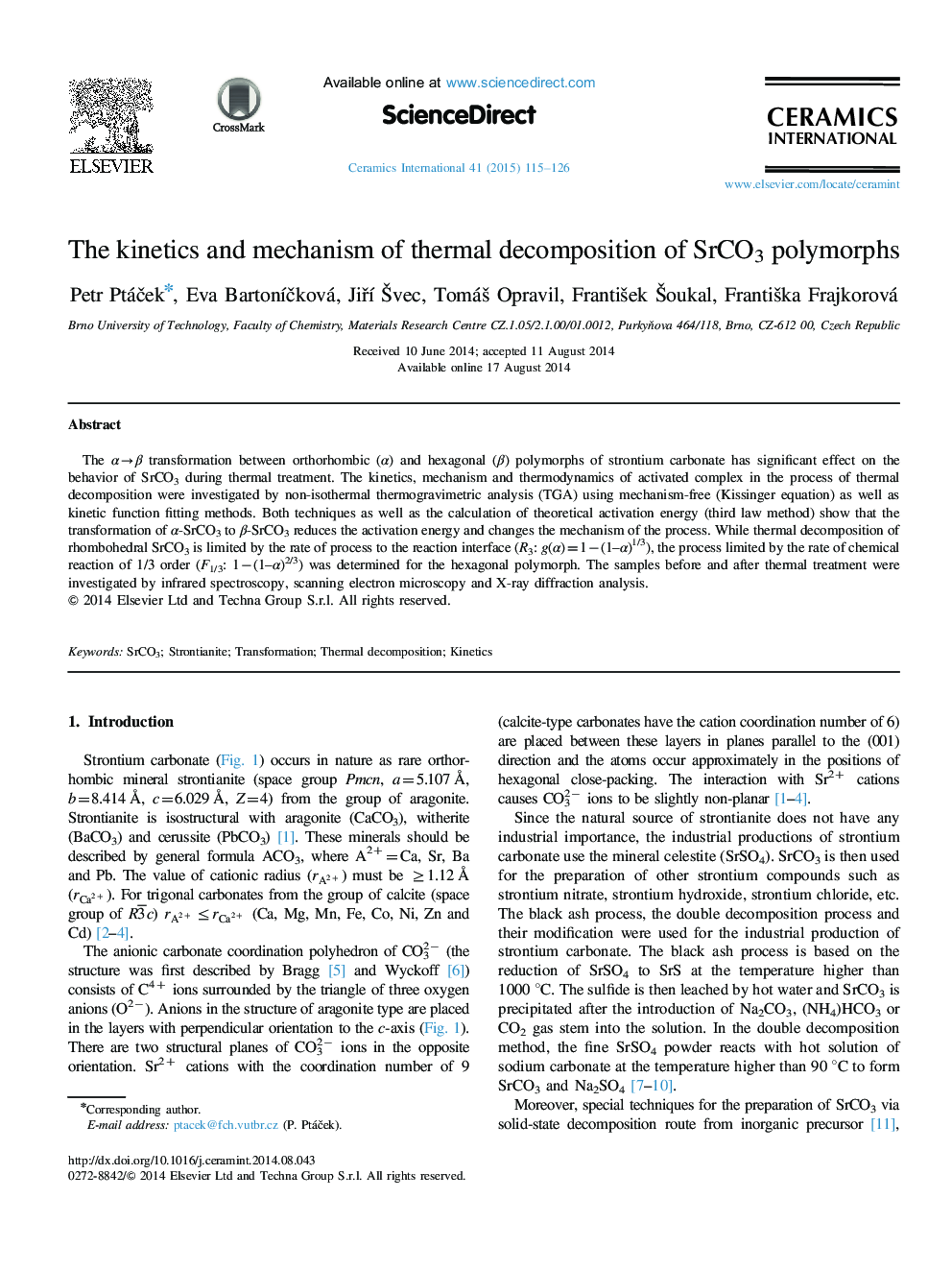| کد مقاله | کد نشریه | سال انتشار | مقاله انگلیسی | نسخه تمام متن |
|---|---|---|---|---|
| 1460687 | 989609 | 2015 | 12 صفحه PDF | دانلود رایگان |

The α→β transformation between orthorhombic (α) and hexagonal (β) polymorphs of strontium carbonate has significant effect on the behavior of SrCO3 during thermal treatment. The kinetics, mechanism and thermodynamics of activated complex in the process of thermal decomposition were investigated by non-isothermal thermogravimetric analysis (TGA) using mechanism-free (Kissinger equation) as well as kinetic function fitting methods. Both techniques as well as the calculation of theoretical activation energy (third law method) show that the transformation of α-SrCO3 to β-SrCO3 reduces the activation energy and changes the mechanism of the process. While thermal decomposition of rhombohedral SrCO3 is limited by the rate of process to the reaction interface (R3: g(α)=1−(1–α)1/3), the process limited by the rate of chemical reaction of 1/3 order (F1/3: 1−(1–α)2/3) was determined for the hexagonal polymorph. The samples before and after thermal treatment were investigated by infrared spectroscopy, scanning electron microscopy and X-ray diffraction analysis.
Journal: Ceramics International - Volume 41, Issue 1, Part A, January 2015, Pages 115–126